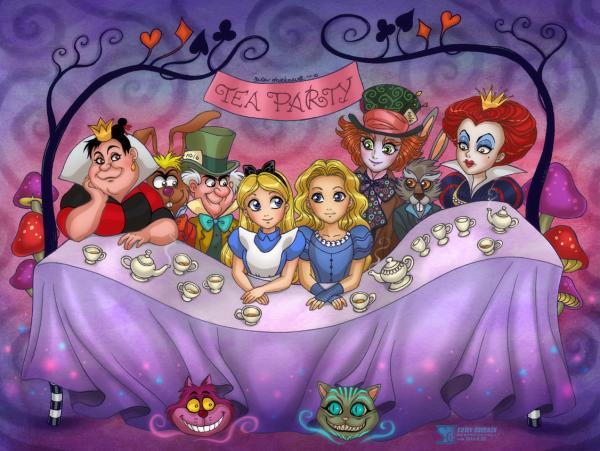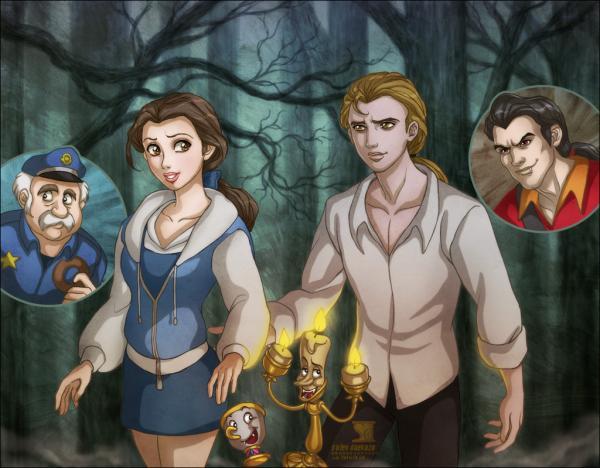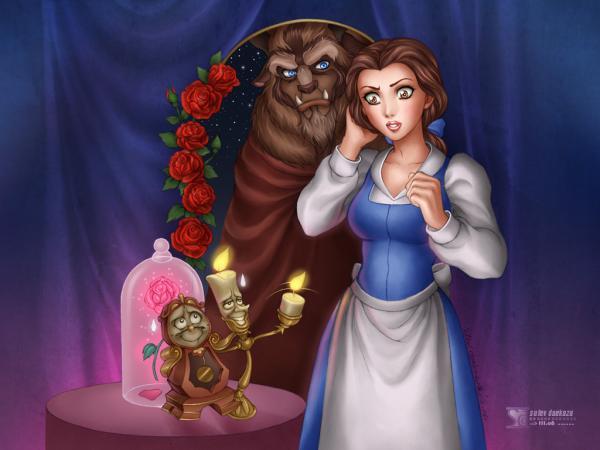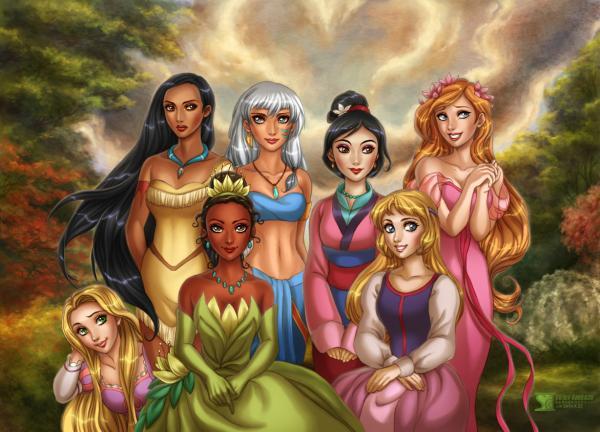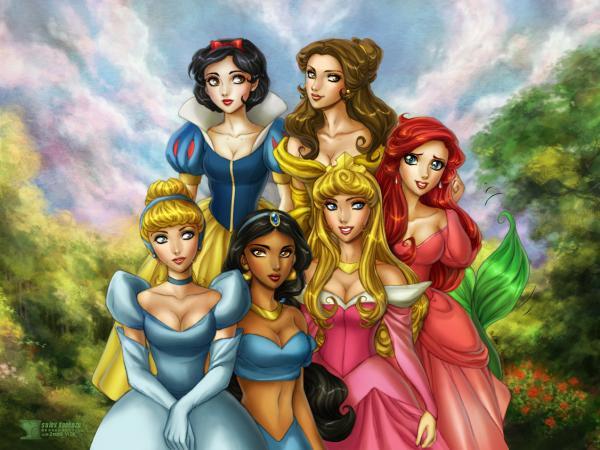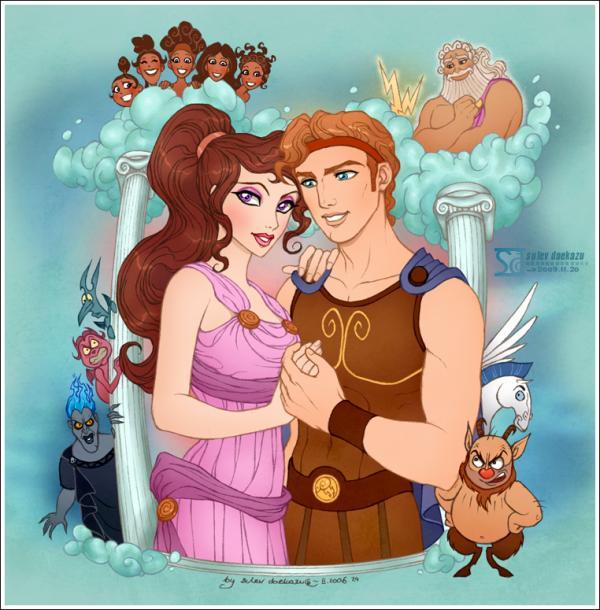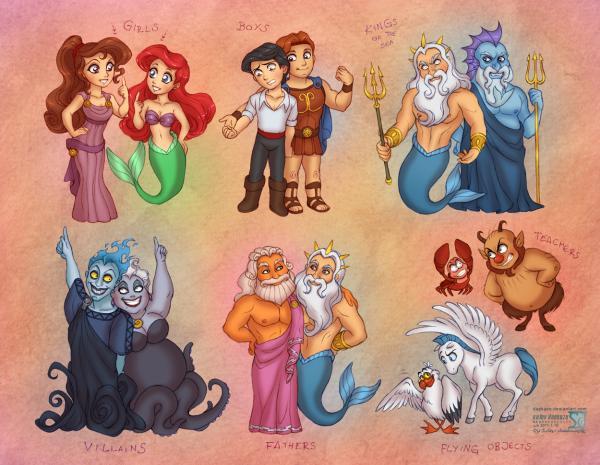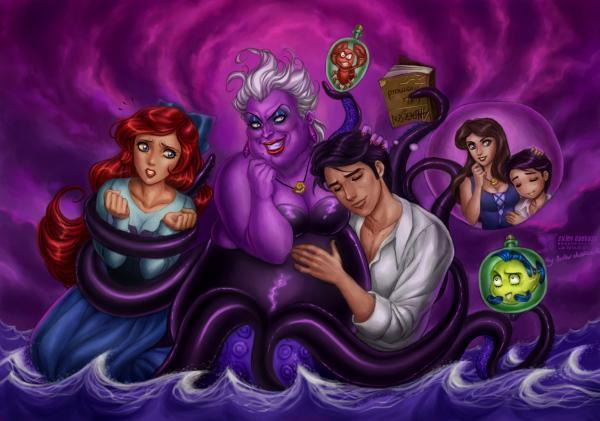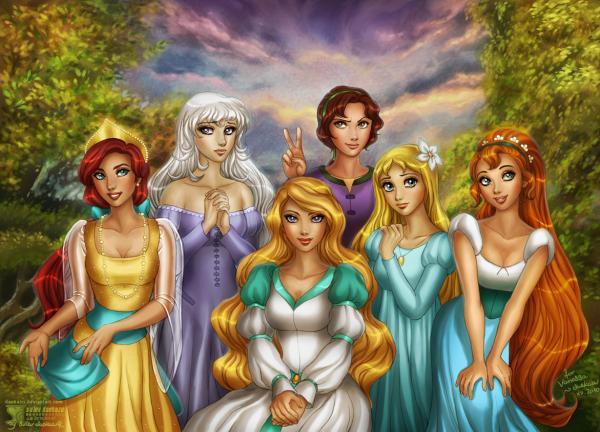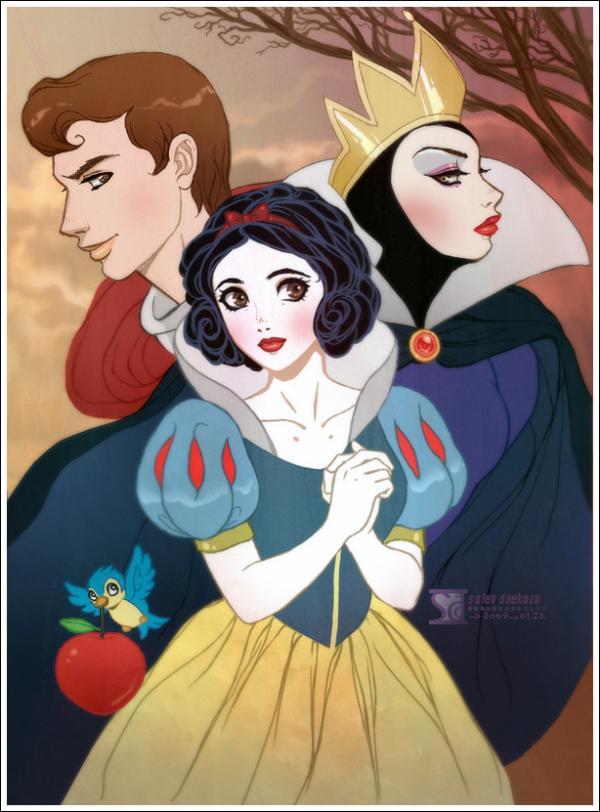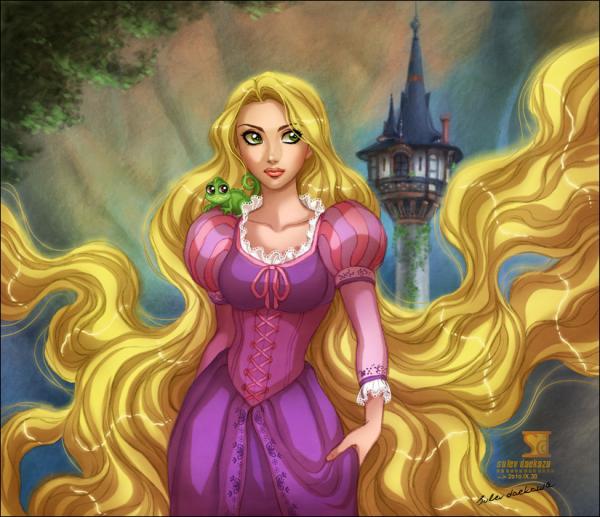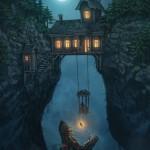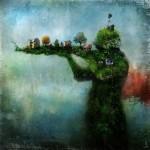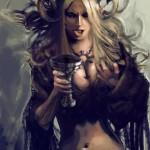In a world that often demands reality, the whimsical escape offered by Disney characters remains a universal solace. From the mischievous grin of a cartoon mouse to the resplendent poise of a princess, Disney’s impact on popular culture has been nothing short of magical. The timeless appeal of Disney characters transcends generations, languages, and geographical borders, enchanting the hearts of children and rekindling the youthful spirit in adults.
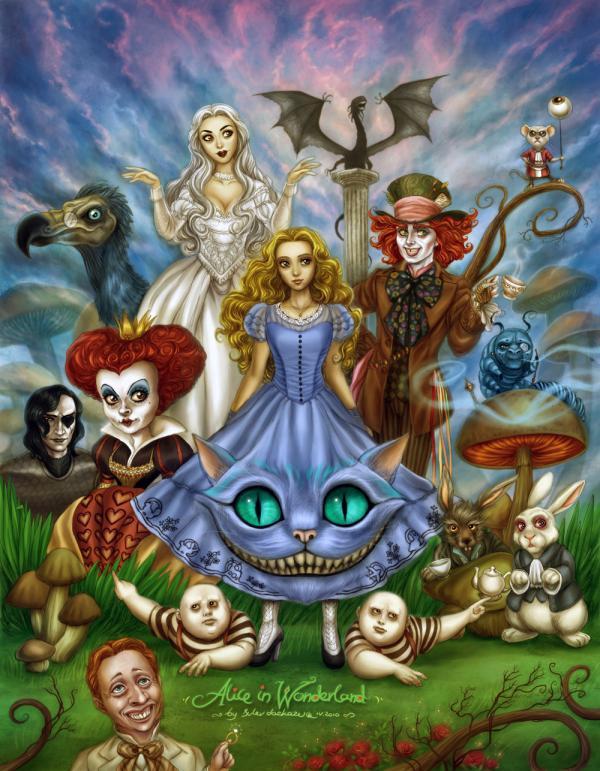
The Birth of an Empire
In 1928, a cheerful anthropomorphic mouse whistled his way onto the screen and into history. Mickey Mouse, the brainchild of Walt Disney and Ub Iwerks, was more than just a character; he was the cornerstone of what would become a vast entertainment empire. The inception of Mickey Mouse marked the beginning of Disney’s animated legacy, a legacy that would grow to include a pantheon of characters each with its distinct personality and story.
The early Disney characters were not just static creations; they evolved with time, reflecting the changing societal norms and technological advancements. From Steamboat Willie’s black-and-white simplicity to the vibrant depth of modern animations, the journey of Disney characters is a testament to the company’s commitment to innovation and storytelling.
Iconic Disney Characters
The Disney universe is populated by an expansive roster of characters, each leaving an indelible mark on the canvas of animation. Here, we explore the iconic characters of some seminal Disney movies and their cultural significance.
Snow White and the Seven Dwarfs (1937)
Snow White
Disney’s first princess, Snow White, introduced the world to the concept of a character whose innocence and kindness could overcome any evil. Her character set the template for future Disney princesses and her story continues to resonate as a tale of purity and resilience.
The Prince
The Prince in Snow White was the first in a long line of Disney heroes, embodying the archetype of the noble savior. Though his role was limited, his character paved the way for more complex princes and heroes in Disney’s storytelling.
The Queen / The Witch
Disney’s first villain, The Queen, later transformed into the Witch, is as infamous as Snow White is famous. She introduced us to the dynamic dichotomy of good vs. evil, setting a precedent for the compelling antagonists that would follow in Disney narratives.
The Seven Dwarfs
Each dwarf, with a name befitting his personality, brought humor, depth, and emotional resonance to the story. They were early examples of supporting characters who add richness and layers to the narrative, making the story a collective rather than a solo journey.
Pinocchio (1940)
Pinocchio
The little wooden boy who dreamed of being real taught us about truth, deception, and the essence of humanity. Pinocchio’s journey and transformation is a universal metaphor for personal growth and the quest for identity.
Jiminy Cricket
As Pinocchio’s conscience, Jiminy Cricket became synonymous with the inner voice guiding one’s moral compass. His character remains a beloved figure for his wisdom, charm, and the unforgettable mantra, “Always let your conscience be your guide.”
Geppetto
The kindly woodcarver who wished upon a star showed us the power of hope and the depth of parental love. Geppetto’s character is a tribute to the unconditional love and sacrifice inherent in parenthood.
The Blue Fairy
The embodiment of magic and dreams coming true, The Blue Fairy is a symbol of benevolence and the miraculous possibilities that belief and virtue can summon in our lives.
Honest John and Gideon
The sly fox and his mute cat companion are early examples of Disney’s use of animal characters to portray human characteristics, in this case, deceit and gullibility.
Stromboli
The menacing puppeteer served as an early example of greed and the exploitation of innocence, themes that Disney would revisit with nuance in later works.
Fantasia (1940)
Mickey Mouse (as The Sorcerer’s Apprentice)
In one of his most iconic roles, Mickey Mouse captured the consequences of mischief and the pursuit of power without understanding. The segment remains a cinematic piece of art that beautifully marries animation and classical music.
Yen Sid (The Sorcerer)
Though silent, Yen Sid exudes authority and wisdom, teaching a valuable lesson about the responsibility that comes with power.
Chernabog
As the embodiment of darkness and terror, Chernabog’s presence in Fantasia showcased Disney’s ability to delve into more mature themes, firmly establishing the studio as a versatile powerhouse.
Dumbo (1941)
Dumbo
The eponymous character of the 1941 classic, Dumbo, with his oversized ears and innocent eyes, captured the hearts of audiences around the world. As a symbol of resilience, his journey from ridicule to triumph resonated deeply with viewers, reminding them that what makes you different can be your greatest strength.
Timothy Q. Mouse
Timothy, the feisty yet supportive mouse, played the role of the underdog’s champion. His character illustrated the importance of friendship and belief in others, teaching viewers the value of seeing past appearances and standing up for what is right.
The Ringmaster
The Ringmaster served as a foil to Dumbo’s innocence, a representation of those who exploit others for personal gain. His character was crucial in setting up the conflict that drives the narrative forward, underscoring the theme of overcoming adversity.
Bambi (1942)
Bambi
The young prince of the forest, Bambi, became an icon for youth and growth. His character’s development from a naïve fawn to a mature stag mirrored the journey of growing up, dealing with loss, and understanding one’s place in the world.
Thumper
Thumper, with his thumping foot and spirited personality, brought humor and lightness to Bambi’s story. He was a figure of joy and the power of positive thinking, even in the face of challenges.
Flower
The bashful yet endearing skunk, Flower, added to the film’s colorful cast, representing the theme of unlikely friendships and the idea that love and acceptance come in many forms.
Faline
Faline, Bambi’s love interest, embodied the sweetness of first love and the tender connections that form as we grow and explore the world around us.
Cinderella (1950)
Cinderella
Perhaps one of the most iconic Disney princesses, Cinderella, epitomized hope and the belief that kindness can change your fate. Her rags-to-riches story is a cultural touchstone for the power of dreams and the triumph of the spirit over hardship.
Prince Charming
Prince Charming, the archetype of the fairy tale hero, represented the ideal of true love’s reward for goodness and virtue, reinforcing the romantic notions that pervade much of Disney’s early storytelling.
Fairy Godmother
The Fairy Godmother was a beacon of magic and benevolence, a figure that demonstrated that help can come when you least expect it, especially if you keep a good heart.
Lady Tremaine
The evil stepmother, Lady Tremaine, along with her daughters Anastasia and Drizella, personified envy and cruelty. They are a stark contrast to Cinderella’s goodness, illustrating the battle between good and evil that is central to many Disney narratives.
Lucifer the Cat
Lucifer, the sly and wicked cat, added an element of comic relief to the story, even as he posed yet another obstacle for Cinderella to overcome.
Alice in Wonderland (1951)
Alice
Served as the curious adventurer, Alice, a representation of the quest for knowledge and the exploration of the unknown. Her journey through Wonderland resonated with audiences as a metaphor for the sometimes nonsensical journey of life.
White Rabbit
The White Rabbit, with his constant worry about being late, mirrored society’s preoccupation with time and deadlines, a relatable concept for viewers of all ages.
Cheshire Cat
The enigmatic Cheshire Cat provided whimsical wisdom and illustrated the beauty of riddles and the allure of the mysterious.
The Mad Hatter
The Mad Hatter was a celebration of the bizarre and the embrace of the unconventional, challenging the audience to think outside the norms of society.
The Queen of Hearts
The Queen of Hearts represented the dangers of absolute power and uncontrolled temper, serving as a cautionary tale of leadership gone awry.
Peter Pan (1953)
Peter Pan
The boy who wouldn’t grow up, Peter Pan, symbolized the eternal child in everyone, the desire for adventure and the resistance to the responsibilities of adulthood.
Wendy Darling
Wendy embodied the transition from childhood to maturity, balancing her motherly instincts with her longing for escapades in Neverland.
The Darling Children
John and Michael accompanied Wendy on her journey, each adding their own touch to the themes of imagination and the bittersweet nature of growing up.
Tinker Bell
Tinker Bell became an icon of sass and jealousy, but also of loyalty and sacrifice, showing that even the smallest of us can make a big impact.
Captain Hook
The quintessential villain, Captain Hook, with his mix of menace and slapstick humor, provided a perfect adversary for Peter Pan, symbolizing the consequences of letting fear and bitterness take hold.
Smee
Smee, Hook’s bumbling assistant, added a touch of levity to the dangers of Neverland, showing that even villains have a human side.
Lady and the Tramp (1955)
Lady
The refined and elegant cocker spaniel, Lady, represents the journey out of one’s comfort zone and the discovery of a broader world beyond the familiar. Her character arc from a pampered pet to an adventurous spirit captures the essence of personal growth.
Tramp
The Tramp, a streetwise mongrel with a heart of gold, challenges the stereotypes of class and upbringing, teaching the value of character over circumstance. His free-spirited nature and charm have made him an enduring symbol of the rogue hero archetype.
Jock and Trusty
Jock and Trusty, Lady’s loyal friends, add depth to the narrative, representing the themes of friendship and loyalty. Their contrasting personalities provide humor and warmth, reinforcing the film’s emphasis on companionship.
Sleeping Beauty (1959)
Aurora
Princess Aurora, also known as Briar Rose, represents the classic Disney princess—graceful, kind-hearted, and a victim of circumstance. Her character is central to the themes of destiny and the interplay between light and darkness.
Prince Phillip
Prince Phillip stands out among the early Disney princes as one of the first to have a more developed personality and a role in the action. His fight against Maleficent’s forces and eventual victory through the power of true love’s kiss is a staple of fairy-tale heroism.
Maleficent
Maleficent, with her commanding presence and chilling malevolence, set the bar for Disney villains. As the personification of pure evil, her character is a stark reminder of the power of darkness and the lengths it will go to maintain control.
Flora, Fauna, and Merryweather
The Three Good Fairies bring light, humor, and magic to the story, each contributing their distinct personalities to the protection and aid of Princess Aurora. Their dedication and resourcefulness are key to the film’s resolution and its message that good ultimately prevails over evil.
101 Dalmatians (1961)
Pongo and Perdita
Pongo and Perdita, the doting Dalmatian parents, captured the hearts of audiences with their unwavering dedication to their pups. Their story highlighted the importance of family and the lengths one will go to protect their loved ones.
Cruella de Vil
Cruella de Vil emerged as one of Disney’s most unforgettable villains. Her extravagant fashion sense and ruthless pursuit of the dalmatian puppies left a lasting impact on pop culture, symbolizing the ultimate in villainy and greed.
The Puppies (including Lucky, Rolly, and Patch)
The adventurous puppies, each with their unique personalities, brought joy, humor, and a touch of chaos to the story. Characters like Lucky, Rolly, and Patch became icons for the mischievous yet innocent nature of childhood.
The Sword in the Stone (1963)
Arthur (Wart)
Arthur, or Wart, is an embodiment of the classic hero’s journey. His transformation from a humble squire to the King of England serves as an inspiration that greatness can come from the most unexpected places.
Merlin
Merlin, the wise and somewhat eccentric wizard, is a testament to the power of knowledge and foresight. His guidance of Arthur represents the mentor archetype, crucial in many hero narratives.
Archimedes
Archimedes, the owl, adds a layer of intellect and dry wit to the story. His skeptical nature and reluctant fondness for Wart provide a counterbalance to Merlin’s optimism.
The Jungle Book (1967)
Mowgli
As the man-cub raised by wolves, Mowgli’s journey of self-discovery resonates with audiences grappling with their identity and place in the world.
Baloo
Baloo the bear, with his laid-back philosophy of “The Bare Necessities,” became a cultural icon for living life with joy and ease, reminding audiences of the importance of the simple pleasures.
Bagheera
The panther Bagheera, with his stern but caring guidance of Mowgli, represents the protective forces in our lives that keep us grounded and safe.
Shere Khan
The menacing tiger Shere Khan brought to life our primal fears and the concept of the natural order, challenging Mowgli and viewers to face their adversaries with courage.
Kaa
Kaa, the hypnotic snake, added an element of cunning deception, illustrating the dangers of succumbing to sweet words and manipulation.
King Louie
King Louie and his quest to be human-like brought a humorous, if somewhat poignant, exploration of identity and the desire to belong to a world beyond one’s reach.
The Little Mermaid (1989)
Ariel
Ariel, the mermaid princess with a fascination for the human world, struck a chord with those yearning for exploration and freedom. Her journey underlines the universal quest for understanding and love across boundaries.
Prince Eric
Prince Eric, the object of Ariel’s affections, represents the dream of finding love that is transformative and unconditional, a theme that has enchanted viewers for generations.
Ursula
The sea witch Ursula, with her blend of charisma and treachery, serves as a powerful reminder of the perils of making deals with forces that seek to control and destroy.
King Triton
Ariel’s father, King Triton, embodies the struggle between protective paternal love and the need to let children make their own choices, a conflict familiar to parents and children alike.
Sebastian and Flounder
Sebastian, the cautious crab, and Flounder, the loyal fish friend, provide comic relief as well as moments of bravery, highlighting the value of friendship in the face of adversity.
Beauty and the Beast (1991)
Belle
The love of Belle for books and desire for adventure made her an icon for intelligence and independence, challenging the traditional princess mold and empowering viewers to seek more.
Beast
The Beast’s journey from arrogance to humility and love demonstrated the transformative power of compassion and the complexity of character beyond appearances.
Gaston
Gaston, the narcissistic antagonist, serves as a critique of superficial charm and the dangers of unchecked ego and entitlement.
Lumière, Cogsworth, Mrs. Potts, and Chip
The enchanted servants, led by the charismatic Lumière and the fastidious Cogsworth, along with the nurturing Mrs. Potts and her son Chip, brought warmth and a sense of family to the Beast’s castle, emphasizing the idea that home is where the heart is.
Aladdin (1992)
Aladdin
The “diamond in the rough,” with his rags-to-riches story, Aladdin, resonated with audiences for his resourcefulness and his heart, despite his humble beginnings.
Jasmine
Princess Jasmine broke the mold of the passive princess, showing a strong will, intelligence, and a desire for autonomy, making her a role model for self-determination.
Genie
The Genie, with his boundless energy and humor, was a breakthrough in animation and comedic timing, becoming a symbol of the magic of friendship and the joy of freedom.
Jafar
The villain Jafar, with his chilling quest for power, exemplified the destructive nature of ambition without conscience.
Iago and Abu
Iago, the sarcastic parrot sidekick to Jafar, and Abu, Aladdin’s mischievous monkey companion, added layers of complexity and entertainment to the narrative, highlighting themes of loyalty and betrayal.
The Lion King (1994)
Simba
Simba’s epic journey from cub to king embodied the circle of life and the responsibilities that come with growing up, striking a deep emotional chord with viewers.
Nala
Nala, Simba’s childhood friend and later his queen, represented strength and devotion, playing a crucial role in Simba’s return to Pride Rock.
Mufasa
The wise and noble Mufasa became a symbol of leadership and integrity, leaving a legacy that would guide Simba to his rightful place as king.
Scar
Scar’s treachery and quest for dominance offered a dark reflection on the corrosive nature of envy and the consequences of greed.
Timon and Pumbaa
The meerkat and warthog duo, Timon and Pumbaa, with their carefree lifestyle, brought a light-hearted philosophy to the film, teaching the importance of friendship and the power of perspective.
Rafiki
The shaman-like mandrill Rafiki provided spiritual guidance to Simba, representing the wisdom of ancestors and the importance of embracing one’s destiny.
Pocahontas (1995)
Pocahontas
With her deep connection to nature and her courageous heart, Pocahontas, became an icon for environmental stewardship and the pursuit of understanding between diverse cultures.
John Smith
John Smith, the explorer, represented the possibility of change and the ability to recognize and respect the value of different ways of life.
Governor Ratcliffe
Governor Ratcliffe, the antagonist driven by greed, served as a historical critique of colonization and the exploitation of natural resources.
Meeko and Flit
Meeko, the raccoon, and Flit, the hummingbird, provided moments of levity and demonstrated the importance of nature’s creatures in the tapestry of life.
The Hunchback of Notre Dame (1996)
Quas#### Quasimodo
Quasimodo, the bell-ringer of Notre Dame, challenged viewers to confront and redefine traditional notions of beauty and heroism. His story is a poignant narrative about acceptance, compassion, and the yearning to be a part of something greater.
Esmeralda
Esmeralda stood as a beacon of strength, kindness, and social justice. Her character brought issues of prejudice and inequality to the forefront, inspiring courage and empathy in the face of adversity.
Judge Claude Frollo
Judge Frollo’s complex character illustrated the dangers of fanaticism and hypocrisy. His internal conflict and ultimate downfall serve as a stark warning against the corruption of power and the guise of righteousness.
Phoebus
Captain Phoebus added a dimension of honor and virtue, highlighting the struggle between duty and doing what’s morally right, thus enriching the tapestry of the narrative with conflict and resolution.
Hercules (1997)
Hercules
The journey of Hercules from zero to hero, complete with trials and tribulations, resonated with audiences as a classic underdog story. His character exemplified the virtues of strength, bravery, and the quest for identity.
Megara (Meg)
Megara, or Meg, introduced a nuanced female character who was both cynical and vulnerable. Her backstory offered a more complex and modern take on love, sacrifice, and redemption.
Hades
Hades brought a new level of wit and sarcasm to the pantheon of Disney villains. His fast-talking, charismatic personality contrasted sharply with his malevolent intentions, creating a memorable and entertaining antagonist.
Philoctetes (Phil)
Phil, the satyr trainer, embodied the gruff mentor archetype, injecting humor and heart into the hero’s journey, and ultimately teaching the value of hard work and perseverance.
Pegasus
Pegasus, the winged horse, symbolized the bond between hero and companion, adding an element of loyalty and the fantastical to Hercules’ adventures.
Mulan (1998)
Mulan
The character redefined the concept of a Disney heroine by showcasing courage, ingenuity, and selflessness. Her brave decision to disguise herself as a man and take her father’s place in the army challenged traditional gender roles and resonated with audiences as an empowering narrative of self-discovery and honor.
Captain Li Shang
Captain Li Shang presented a new kind of Disney male lead – one who is strong and disciplined, yet open to changing his perceptions. His interactions with Mulan brought forth themes of respect and equality, influencing the portrayal of masculinity in animation.
Mushu
Mushu, the diminutive yet fiery dragon, provided comic relief while also embodying the themes of redemption and loyalty. His determination to help Mulan succeed, despite his initial self-serving motives, won over audiences and added depth to the story.
Shan Yu
The villain Shan Yu introduced a more serious and menacing threat than seen in previous Disney films. His character heightened the stakes of Mulan’s mission, emphasizing the themes of sacrifice and bravery against overwhelming odds.
Tarzan (1999)
Tarzan
The character explored the themes of identity and belonging, as he struggled to reconcile his human nature with his jungle upbringing. His character’s journey to self-acceptance and the defense of his family expanded Disney’s exploration of what it means to be a hero.
Jane Porter
Jane Porter stepped beyond the traditional damsel in distress archetype, instead presented as intelligent, compassionate, and curious. Her character encouraged viewers to seek knowledge and adventure, regardless of societal expectations.
Clayton
The antagonist Clayton represented the darker side of humanity—greed, exploitation, and a disregard for nature. His downfall served as a cautionary tale against the destructive consequences of such traits.
Kala
Kala, Tarzan’s gorilla mother, epitomized unconditional love and acceptance. Her nurturing of Tarzan despite their differences highlighted the power of familial bonds, regardless of biology.
Kerchak
Kerchak, the stern leader of the gorillas, embodied the protective nature of a family patriarch. His eventual acceptance of Tarzan completed a narrative arc that spoke to themes of leadership, forgiveness, and the complexities of parent-child relationships.
The Emperor’s New Groove (2000)
Kuzco
Emperor Kuzco’s transformation from a selfish ruler to a compassionate friend provided a humorous take on the classic redemption story. His journey taught audiences about humility and the importance of empathy.
Pacha
The kind-hearted villager Pacha offered a stark contrast to Kuzco’s arrogance. His character demonstrated the virtues of patience, family, and integrity, ultimately influencing Kuzco’s change of heart.
Yzma
The villainess Yzma, with her over-the-top schemes and dramatic flair, brought a new level of comedic villainy to Disney films. Her character underscored the folly of vanity and the comedic potential of a villain’s hubris.
Kronk
Kronk, Yzma’s lovable henchman, delivered some of the film’s most memorable moments. His internal conflict between following orders and his moral compass provided laughs while showcasing the importance of making the right choices.
Lilo & Stitch (2002)
Lilo
The character resonated with audiences for her relatability and spirit. Her struggles with loneliness and the desire for a friend in Stitch spoke to themes of family, belonging, and the healing power of love.
Stitch
Stitch, the mischievous alien, taught viewers about growth and the capacity for change. His evolution from a destructive creature to a loving family member illustrated that one’s past does not have to define their future.
Nani
Nani, Lilo’s older sister and guardian, depicted the challenges of young adulthood and the strength required to keep a family together. Her dedication to Lilo brought attention to the often-overlooked sacrifices made by single parents and guardians.
Jumba and Pleakley
Jumba and Pleakley provided comedic interludes while also being integral to Stitch’s story. Their unlikely friendship with Lilo and Stitch emphasized the film’s overarching message about the diverse forms that families can take.
Pirates of the Caribbean Franchise (2003–)
Captain Jack Sparrow
Captain Jack Sparrow became an instant icon, reinvigorating the pirate genre with his eccentric charm and wit. His character captivated audiences and influenced a resurgence in pirate-themed media.
Will Turner
Will Turner’s evolution from a humble blacksmith to a swashbuckling hero captured the spirit of adventure and romance. His journey through the franchise highlighted themes of honor, love, and destiny.
Elizabeth Swann
Elizabeth Swann challenged traditional female roles in action-adventure films. Her character’s intelligence, combat skills, and leadership qualities made her a role model for strength and independence.
Captain Hector Barbossa
Barbossa, with his treacherous nature and pursuit ofimmortality, served as a complex antagonist, evolving throughout the series to show that even the most hardened hearts can find redemption.
Davy Jones
Davy Jones, the legendary figure with a heart bound in perpetual torment, embodied the darker, more mythical aspects of the franchise. His tragic love story and fearsome presence underscored the franchise’s theme of love as both a redeeming and destructive force.
Finding Nemo (2003) and Finding Dory (2016)
Nemo
Nemo’s adventurous spirit and desire to prove his independence struck a chord with audiences, especially those facing their own limitations. His story is a tale of perseverance, courage, and the boundless love between parent and child.
Marlin
Marlin’s transformation from an overprotective father to a more trusting and open-hearted parent mirrored the real-life journeys of many viewers. His character highlighted the challenges of letting go and the rewards of faith in others’ abilities.
Dory
Dory, with her short-term memory loss and optimistic attitude, became an unlikely heroine. Her character taught audiences about resilience, the power of positivity, and the importance of friendship.
Bruce, Crush, and Hank
Supporting characters like the vegetarian shark Bruce, the laid-back sea turtle Crush, and the resourceful octopus Hank added depth and humor to the films, each bringing their unique perspective to the oceanic world.
The Incredibles (2004) and Incredibles 2 (2018)
The Parr Family
The Parr family redefined superhero narratives by combining action-packed adventures with the dynamics of family life. Characters like Mr. Incredible, Elastigirl, and their children Violet, Dash, and Jack-Jack showcased the various facets of family and individual identity, power, and responsibility.
Frozone
Frozone, with his cool demeanor and loyalty, represented the enduring nature of friendship and the idea that heroism doesn’t always require a cape.
Edna Mode
The fashion-forward Edna Mode became a cultural icon for her no-nonsense attitude and memorable one-liners. Her character emphasized the importance of self-confidence and the power of a good outfit.
Syndrome
Syndrome’s journey from fan to foe illustrated the consequences of hero worship and the dangers of letting bitterness shape one’s destiny.
Cars Franchise (2006–)
Lightning McQueen
Lightning McQueen’s character arc from a brash, self-centered racer to a mature team player captured the essence of personal growth and the true meaning of success.
Mater
Mater, the lovable tow truck, taught audiences about the beauty of being true to oneself and the value of unconditional friendship.
Sally Carrera
Sally, the Porsche with a past, brought a sense of history and depth to the automotive world of Cars, showing that everyone has a story to tell.
Doc Hudson
Doc Hudson served as a mentor to Lightning, providing wisdom and guidance. His character spoke to the impact a great teacher can have on shaping a pupil’s life and the importance of passing on knowledge.
Chick Hicks
Chick Hicks, the antagonist of the series, highlighted the pitfalls of ruthless ambition and the importance of playing fair, both on and off the racetrack.
Ratatouille (2007)
Remy
Remy, the little rat with big culinary dreams, brought a fresh perspective to the importance of chasing one’s passions, regardless of the odds. His determination and talent challenged the stereotypes and prejudices about who can create art, making him a symbol for aspiration and inclusivity.
Linguini
Linguini, the clumsy kitchen hand who becomes an unwitting head chef, represents the idea that greatness can be achieved through partnership and mutual respect. His character arc shows the importance of humility and the willingness to accept help.
Colette
Colette stands as a beacon for female empowerment in a male-dominated industry. Her skill, dedication, and no-nonsense attitude broke down gender barriers, signaling a change in cultural narratives around women’s roles in professional kitchens and beyond.
Skinner
Skinner, the pint-sized, greedy chef, is a reminder of the pitfalls of commercialism over creativity. His character serves as a foil to Remy’s genuine love for cooking, emphasizing the importance of authenticity in art.
Anton Ego
The formidable critic, Anton Ego, with his sharp pen and even sharper tongue, eventually reveals a softer side, illustrating that even the harshest judges can be moved by true passion and talent.
WALL-E (2008)
WALL-E
The last robot on Earth, WALL-E, captured the hearts of viewers with his loneliness and curiosity. His journey sparked discussions about environmental conservation, consumerism, and the enduring human need for connection.
EVE
EVE, the sleek, advanced robot, contrasted WALL-E with her efficiency and directive. Their evolving relationship highlighted the balance between technology and nature, duty and love.
M-O
The obsessive-compulsive cleaning robot, M-O, added humor to the film while also representing our obsession with cleanliness and order in a world overtaken by waste.
Up (2009)
Carl Fredricksen
Carl Fredricksen, the elderly widower who embarks on an adventure by flying his house with balloons, became an unlikely hero. His character reminds us that adventure and discovery are not bound by age.
Russell
Russell, the earnest and enthusiastic Wilderness Explorer, contrasts Carl’s initial curmudgeonly nature. His character represents youth’s innocence and the importance of intergenerational friendships.
Dug
Dug, the talking dog, provides comic relief with his immediate attachment to Carl and Russell. He symbolizes loyalty and the simple joys that pets bring into our lives.
Kevin
The exotic bird Kevin brings an element of the wild and the unknown into the story, further expanding the film’s theme of exploration and the bonds formed through shared experiences.
Tangled (2010)
Rapunzel
With her magical hair and infectious spirit, Rapunzel, redefined the traditional princess narrative. Her character’s drive for freedom and self-discovery resonated with audiences, emphasizing the importance of personal growth.
Flynn Rider (Eugene Fitzherbert)
Flynn Rider, the charming rogue with a secret heart of gold, brought complexity to the role of the male lead. His transformation from cynical thief to selfless hero reflected the film’s themes of redemption and true identity.
Mother Gothel
Mother Gothel, the controlling figure who keeps Rapunzel captive, personified the dark side of vanity and fear of aging. Her character is a lesson in the toxicity of possessiveness and deceit.
Maximus
Maximus, the horse with a dog’s personality, delighted viewers with his determination and antics. His unlikely friendship with Flynn added a layer of comedy and camaraderie to the film.
Pascal
Pascal, Rapunzel’s loyal chameleon, provided silent but expressive support. His character shows that friendship doesn’t always need words to be understood and felt.
Brave (2012)
Merida
Merida, the fiery-haired Scottish princess with a passion for archery, challenged conventional gender roles and the expectations placed on young women. Her struggle for autonomy and her reconciliation with her mother spoke to the complexities of family dynamics and the journey toward mutual understanding.
Queen Elinor
Queen Elinor represented the traditional views of royalty and femininity, but her character’s transformation—both literal and figurative—revealed depth and adaptability, highlighting the evolving nature of mother-daughter relationships.
King Fergus
King Fergus, with his boisterous demeanor and larger-than-life presence, added warmth and humor to the story while also embodying the protective nature of parenthood.
The Triplets (Harris, Hubert, and Hamish)
The mischievous triplets provided comic relief and showcased the chaos and joy of sibling relationships. Their antics underscored the film’s lighter, more playful aspects.
Frozen (2013) and Frozen II (2019)
Elsa
Elsa, the Snow Queen with a secret, became an icon for self-acceptance and the struggle with personal demons. Her journey to control and embrace her powers strucka chord with anyone grappling with their own identity. Her anthem “Let It Go” became a cultural phenomenon, celebrating the liberation that comes with self-acceptance.
Anna
Anna’s unwavering optimism and love for her sister redefined the concept of true love in Disney films. Her character’s development from a naive romantic to a courageous, independent young woman inspired viewers to find strength within themselves.
Kristoff
Kristoff, the rugged ice harvester, brought a down-to-earth charm to the story. His respectful and supportive relationship with Anna presented a healthier model of masculinity and romance in modern storytelling.
Olaf
Olaf, the endearing snowman brought to life by Elsa’s magic, represented the innocence and joy of childhood. His humor and simple wisdom, such as the poignant line “Some people are worth melting for,” captured the essence of selfless love.
Sven
Sven, Kristoff’s loyal reindeer, exemplified the bond between humans and animals. His expressive personality added depth to the film’s comedic elements and emotional beats.
Hans
Hans served as a subversion of the archetypal prince charming, revealing the dangers of facade and manipulation. His betrayal was a narrative twist that challenged the traditional Disney trope of first-love romance.
Big Hero 6 (2014)
Hiro Hamada
Hiro Hamada, the teenage robotics prodigy, represented the modern hero – a blend of intellect, creativity, and emotional vulnerability. His journey through grief and vengeance to becoming a leader showcased the complexities of youth and heroism.
Baymax
Baymax, the inflatable healthcare companion, became a symbol of compassion and the potential for technology to heal and protect. His character’s purity and dedication to Hiro’s well-being resonated with audiences, reinforcing the importance of caring and empathy.
Go Go Tomago, Wasabi, Honey Lemon, and Fred
Hiro’s diverse group of friends each brought unique skills and personalities to the team, highlighting the value of diversity and collaboration. Their dynamic reflected the film’s celebration of friendship and innovation.
Moana (2016)
Moana
Moana’s character broke new ground as a Polynesian chief’s daughter with a strong connection to her culture and a calling to the sea. Her story of self-discovery and environmental stewardship spoke to the importance of heritage and the courage to forge one’s path.
Maui
Maui, the shape-shifting demigod, added mythic grandeur to Moana’s journey. His character arc from egocentric to selfless highlighted the themes of redemption and the power of myth in shaping identities.
Chief Tui and Gramma Tala
Chief Tui and Gramma Tala represented the duality of tradition and change within a community. Tala, in particular, encouraged Moana to look beyond the reef, serving as a spiritual guide for embracing destiny.
Heihei and Tamatoa
Heihei, the not-so-bright rooster, and Tamatoa, the giant treasure-hoarding crab, provided comic relief while also embodying the themes of perseverance and the folly of material greed, respectively.
Zootopia (2016)
Judy Hopps
Judy Hopps, the first rabbit police officer in Zootopia, tackled prejudice and stereotypes head-on. Her character’s tenacity and optimism in the face of systemic discrimination inspired conversations about inclusivity and determination.
Nick Wilde
Nick Wilde, the sly fox, started as a con artist but became a symbol of change and the importance of trust. His relationship with Judy challenged the societal prejudices within Zootopia and the audience’s world.
Chief Bogo and Flash
Chief Bogo, the stern buffalo police chief, and Flash, the slow-moving sloth, added layers to Zootopia’s exploration of expectations and patience within a diverse society.
Coco (2017)
Miguel
Miguel’s love for music and his journey to the Land of the Dead brought Mexican culture and the significance of Dia de los Muertos to international audiences. His character underscored the themes of family, memory, and the pursuit of dreams.
Hector
Hector’s quest for recognition and to be remembered by his living relatives highlighted the universal fear of being forgotten and the importance of legacy.
Ernesto de la Cruz
Ernesto de la Cruz, the famed singer with a dark secret, served as a cautionary tale about the cost of fame and the value of authenticity.
Mama Coco and Mama Imelda
Mama Coco’s character, as the elderly matriarch, and Mama Imelda, the family’s ancestor, emphasized the deep connections between generations and the power of storytelling in preserving family history.
Ralph Breaks the Internet (2018)
Wreck-It Ralph
Ralph’s return in the sequel “Ralph Breaks the Internet” expanded his character’s depth, exploring the complexities of friendship in the digital age. His journey through the internet highlights both the pitfalls and potentials of online culture, reflecting our own society’s grappling with technology’s ever-expanding role.
Vanellope von Schweetz
Vanellope continues to break molds as a non-traditional princess who finds her calling in the adrenaline-filled world of online racing. Her character’s growth mirrors the modern girl’s quest for independence and self-identity beyond societal expectations.
Shank
Shank, the fierce yet fair racer from the game Slaughter Race, introduces a new type of role model – a strong, competent female character who challenges Vanellope to push her own limits and redefine her dreams.
Yesss
Yesss, the algorithm that personifies the trendsetting aspect of the internet, encapsulates the fast-paced and ever-changing nature of online fame and influence. Her character provides commentary on the transient nature of digital popularity and its impact on self-worth.
Toy Story Franchise (1995–2019)
Woody
Woody, the loyal cowboy doll, is the heart of the Toy Story franchise. His dedication to his child and fellow toys reflects the timeless themes of loyalty, leadership, and the fear of obsolescence.
Buzz Lightyear
Buzz Lightyear’s character, with his catchphrase “To infinity and beyond!” has become synonymous with bravery and adventure. Buzz’s realization of his true identity as a toy underscores the importance of self-acceptance and the value of community.
Jessie
Jessie, the yodeling cowgirl, brought issues of abandonment and loss to the forefront, offering a poignant look at the emotions attached to being a beloved toy.
Bo Peep
Bo Peep’s evolution from a demure porcelain figure to an independent survivor in “Toy Story 4” redefined her character, challenging traditional gender roles and inspiring audiences with her adaptability and resilience.
The Rest of Andy’s Toys
Rex, Hamm, Slinky Dog, and the Potato Heads each contribute their unique perspectives to the toys’ adventures. Forky, the latest addition, introduced in “Toy Story 4,” addresses themes of purpose and existentialism, resonating with audiences’ own search for meaning.
Disney Television Animation
Darkwing Duck
Darkwing Duck, with his dramatic flair and comedic mishaps, became a beloved figure in Disney’s television animation, symbolizing the parody of superhero tropes while delivering action and laughs.
Scrooge McDuck (DuckTales)
Scrooge McDuck’s love for adventure and treasure is matched only by his love for his family, particularly his grandnephews Huey, Dewey, and Louie. Their escapades in “DuckTales” emphasize the value of curiosity, resourcefulness, and the bond of family.
Kim Possible and Ron Stoppable
Kim Possible and her sidekick Ron Stoppable redefined the teenage superhero genre, blending high school drama with crime-fighting antics. They became icons for a generation, showcasing that ordinary teens can achieve the extraordinary.
Phineas and Ferb
The inventive brothers Phineas and Ferb, along with their pet Perry the Platypus, who leads a double life as Agent P, captured the spirit of creativity and the joy of summer vacation, inspiring children to explore and invent.
Marvel Cinematic Universe (Owned by Disney)
The Avengers
The Marvel Cinematic Universe, acquired by Disney, brought superheroes like Iron Man, Captain America, Thor, Hulk, Black Widow, and Hawkeye to new heights of cultural prominence. Their stories of heroism, sacrifice, and unity have left an indelible mark on modern cinema and pop culture.
Spider-Man and Black Panther
Characters like Spider-Man and Black Panther have garnered immense fan bases, with Black Panther’s portrayal of African culture and heroism breaking box office records and becoming a cultural phenomenon.
Captain Marvel
Captain Marvel, one of the newer additions, represents the next wave of superhero storytelling, focusing on female empowerment and breaking barriers both on and off the screen.
Star Wars Franchise (Owned by Disney)
The Skywalkers and Solos
The acquisition of Lucasfilm by Disney brought the iconic Star Wars characters like Luke Skywalker, Leia Organa, and Han Solo back into the spotlight, bridging generations of fans. Darth Vader remains one of the most recognizable villains in film history, symbolizing the complexities of power and redemption.
The New Generation
Characters like Rey, Finn, Poe Dameron, and Kylo Ren have taken up the mantle, continuing the legacy of the Force and the ever-present battle between light and dark. Their stories have expanded the Star Wars universe, bringing new perspectives to the epic saga.
The influence of these characters on animation and their cultural significance is profound. They have shaped the### Ratatouille (2007)
Remy
Remy, the rat with refined taste, redefined the unlikely hero with his culinary aspirations. His journey from the sewers to a Parisian kitchen cooked up a story of perseverance and breaking stereotypes, encouraging viewers to pursue their dreams regardless of their origins.
Linguini
Linguini, the bumbling kitchen assistant with a heart, represents the everyman thrust into greatness. His character arc, from uncertain cook to confident chef through Remy’s guidance, underscores the theme of finding one’s potential.
Colette
Colette Tatou, the only female chef in the kitchen, became an icon for women striving to break glass ceilings. Her skill, determination, and eventual acceptance of Remy’s talents highlighted the importance of merit and equality.
Skinner
Chef Skinner, the diminutive and antagonistic head chef, embodies the fear of change within established systems. His resistance to Remy’s innovative dishes illustrates the struggle between tradition and innovation.
Anton Ego
Anton Ego, the feared food critic, undergoes a transformation through Remy’s cooking, reminding us that even the most critical and cold-hearted can find joy and nostalgia in the simplicity of a well-crafted meal.
Merchandise and Brand Extension
Disney characters transcend the screen, becoming omnipresent in the form of merchandise. From the cuddly plush toys mimicking the softness of a beloved animal sidekick to the clothing lines allowing fans to wear their favorite characters with pride, Disney has turned character branding into an art form. These characters extend their reach into everyday life, becoming companions in the real world, bringingcomfort, inspiration, and a touch of magic to routine.
The role of Disney characters in merchandise is not merely about commercial success; it’s about creating tangible connections between the stories on screen and the lives of the fans. The characters become part of life’s milestones: birthdays, holidays, and celebrations are often marked with gifts featuring the reassuring smile of Mickey Mouse or the empowering image of a Disney princess. This brand extension is a testament to the characters’ enduring appeal and the desire to keep the magic alive beyond the end credits.
Conclusion
The legacy of Disney characters is a tapestry woven with the threads of imagination, innovation, and an unwavering commitment to storytelling. The enduring love for these characters is not just a triumph of animation; it’s a reflection of our collective desire for stories that uplift, challenge, and transport us to a world where the fantastic becomes possible.
As Disney continues to evolve, introducing new characters and revisiting old ones, the magic endures. The characters we’ve met on screen stay with us, their lessons and memories imprinted on our hearts. They foster a sense of wonder that persists long after childhood, a reminder that no matter how old we get, there’s always room for a little Disney magic in our lives. The future of Disney characters is as bright as a star-soaked sky over Cinderella’s castle, promising to bring joy, wonder, and enchantment to generations to come.
